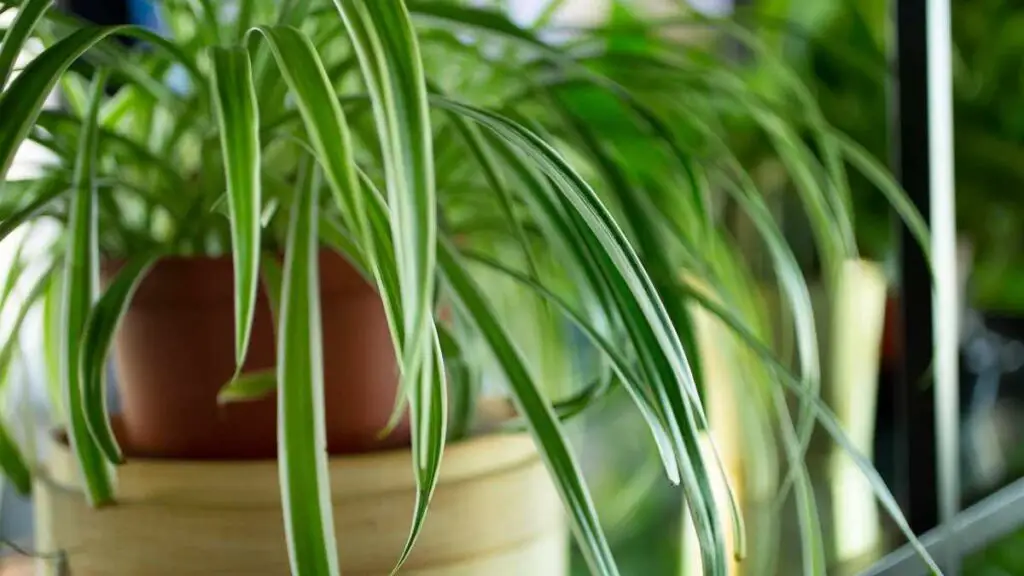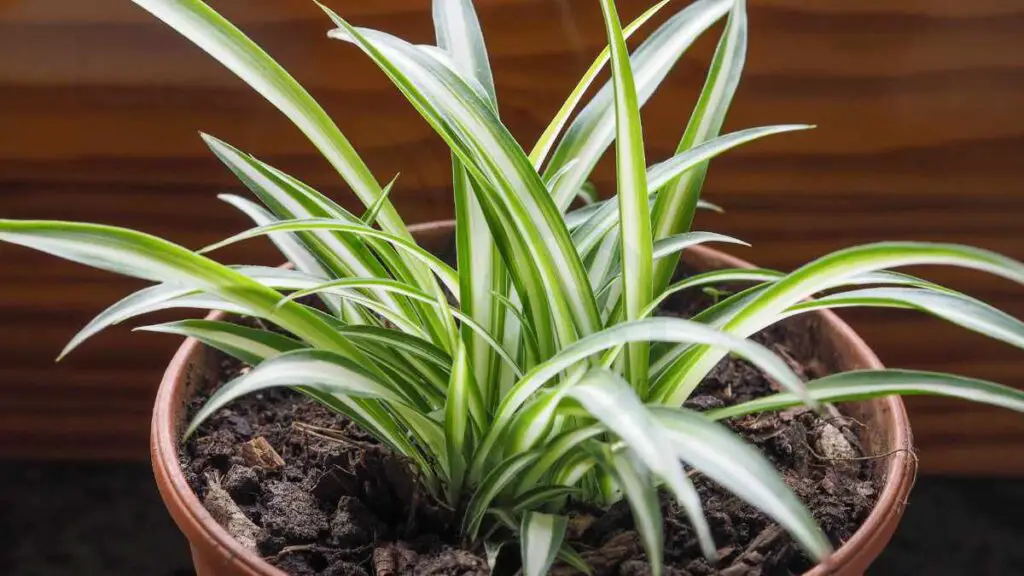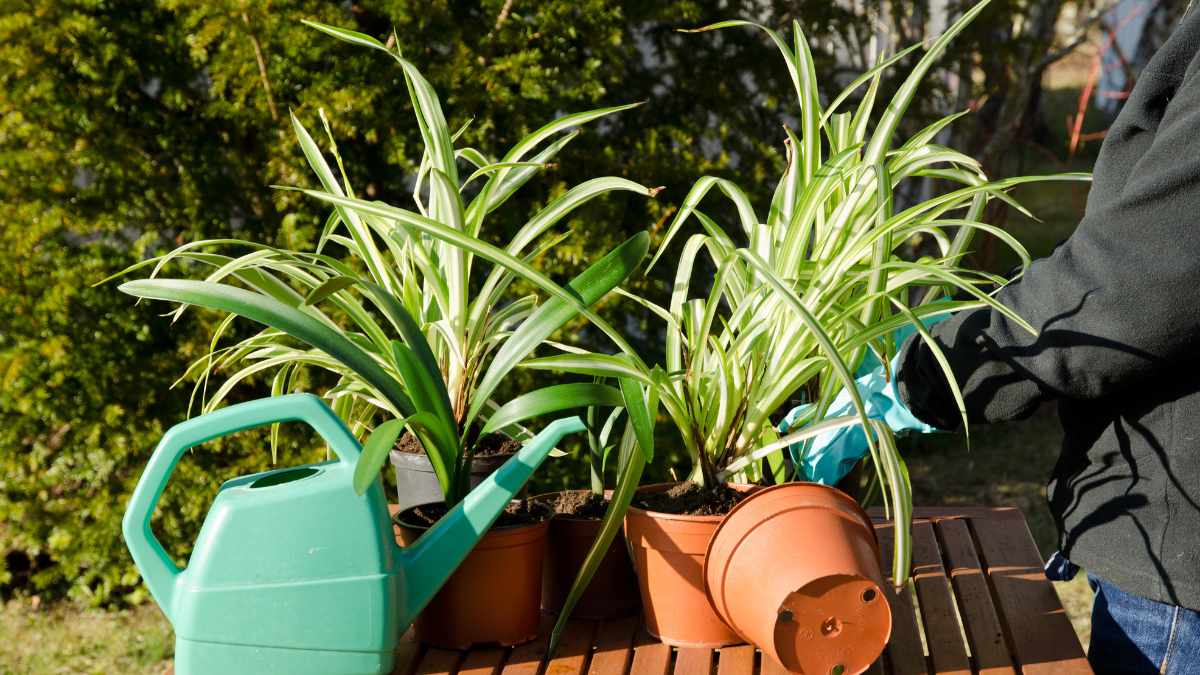When it comes to caring for your indoor plants like the spider plant, watering is key. Finding the right balance between giving it enough water to thrive and avoiding overwatering can be a delicate task. Spider plants are hardy and forgiving, but they have their limits. In this guide, we will delve into the dos and don'ts of watering your spider plant to help you keep your houseplants healthy and vibrant, considering tips for the roots in the pot.
Understanding the signs of underwatering versus overwatering is crucial for the well-being of your spider plant. We will explore how often to water, the best techniques for watering, and how to troubleshoot common watering issues. By the end of this post, you'll be equipped with the knowledge and tips needed to ensure your spider plant flourishes in its environment, including its watering routine and how much water, such as distilled water.
Understanding Spider Plants

Basics of Care
Spider plants are easy to care for. Water spider plants according to your watering routine only when the top soil is dry. This plant thrives with minimal watering, so it's crucial not to overwater them. Check moisture levels by feeling the soil up to the second knuckle. If it's dry at that depth, then it's time to water your spider plant.
Spider plants are low-maintenance and can survive in various conditions. They prefer indirect sunlight and thrive in brighter indoor spots. To ensure their health, avoid placing them in direct sunlight as it can scorch their leaves. Remember, these plants are forgiving if you forget to water them occasionally.
Why They Thrive Easily
Spider plants are resilient and adaptable. They can adjust well to different light conditions, making them perfect for various areas in your home. Their ability to thrive even in less-than-ideal conditions makes them a popular choice among houseplant enthusiasts.
In brighter indoor spots, spider plants grow vigorously and produce more offshoots or "spiderettes." These offshoots can be propagated into new plants easily, allowing you to expand your spider plant collection effortlessly. With proper care and attention to light and watering needs, your spider plant will reward you with lush green foliage.
Importance of Proper Watering

Promoting Healthy Growth
Spider plants require proper watering to thrive. Light fertilization during warmer months is crucial for their growth. Liquid fertilizer should be used once a month in the growing season to provide essential nutrients. Adequate light exposure is necessary for optimal growth, ensuring healthy and vibrant spider plants.
Avoiding Common Mistakes
To maintain the health of spider plants, it's important to avoid common mistakes. Overwatering can lead to root rot and other issues, so it's vital to strike a balance. These plants should not be exposed to direct sunlight, as it can scorch their leaves. Regularly check the soil moisture levels to prevent under or over-watering, ensuring the plant's well-being.
Best Practices for Watering
Determining Frequency
Water spider plants sparingly, especially in colder seasons. Adjust watering frequency based on soil dryness levels to prevent overwatering. Monitor plant health regularly to assess watering requirements accurately.
Ideal Amount of Water
Give spider plants a light drink every week to maintain optimal hydration. During autumn and winter, water less frequently to prevent waterlogging. Ensure the soil moisture remains at optimal levels for healthy growth.
Identifying Watering Issues
Signs of Overwatering
Spider plants can exhibit yellowing leaves, a common sign of overwatering. This occurs when the roots are suffocated by excess water, leading to nutrient deficiencies.
Check for wilting or mushy stems as another indicator of overwatering. These symptoms suggest that the plant is unable to absorb water properly due to waterlogged soil.
Be cautious of soil that remains consistently wet. Overwatered spider plants often have soil that does not dry out between watering sessions, promoting root rot.
Preventing Damage
To prevent overwatering issues, protect spider plants from extreme temperatures. Sudden temperature fluctuations can stress the plant and exacerbate watering problems.
Shield spider plants from harsh sunlight, as excessive heat can accelerate evaporation and increase the need for more frequent watering.
Ensure proper drainage in the plant's pot to prevent root rot. Use pots with drainage holes and well-draining soil to maintain optimal moisture levels.
Environmental Factors Affecting Watering
Light Requirements
Spider plants thrive in medium light conditions, benefiting from bright but indirect sunlight. Direct exposure to the sun can harm their leaves, so it's essential to shield them from it. Providing a consistent source of indirect light is crucial for their overall health and development.
Temperature Needs
Spider plants are resilient to various temperatures, making them adaptable to different environments. However, they should be shielded from frosty conditions as they can damage the plant. Similarly, extreme heat should be avoided as it can lead to wilting and stress on the plant.
Humidity Levels
Spider plants have the ability to adjust to different humidity levels, making them versatile houseplants. To enhance their growth, misting the plant occasionally can provide additional humidity that benefits them. It is vital to maintain moderate humidity levels to ensure the plant's healthy development.
Common Watering Mistakes
How to Avoid Them
Trim regularly to prevent brown tips. Keep leaves clean for optimal photosynthesis. Avoid overfertilizing to prevent damage.
Additional Care Tips
Propagation Techniques
Spider plants can be easily propagated by separating baby spider plants from the parent. These babies, known as spidettes, can be cut off and potted in damp compost. Another method involves using the brown nodules that develop on the plant as roots for propagation.
Extra Love and Attention
To ensure your spider plant thrives, misting it lightly will provide the necessary humidity. Regularly wiping dust off the leaves helps the plant absorb more sunlight for photosynthesis. Remember to offer some occasional pruning to promote healthier growth.
Summary
Now that you understand the ins and outs of watering your spider plant, you can ensure its health and vibrancy. Proper watering practices are crucial for the well-being of your plant, preventing issues like root rot and dehydration. By following the best practices outlined here, you can create an optimal environment for your spider plant to thrive.
Remember, consistency is key. Regularly check your plant's moisture levels and adjust your watering routine accordingly. By providing the right amount of water, considering environmental factors, and avoiding common mistakes, you are setting your spider plant up for success. Your dedication to proper watering will be reflected in the lush greenery and vitality of your beloved plant. Keep up the good work!
Frequently Asked Questions
How often should I water my spider plant?
Water your spider plant when the top inch of the soil feels dry to the touch. Typically, this translates to watering every 1-2 weeks, but frequency may vary based on environmental factors like humidity and sunlight.
What are common signs of overwatering a spider plant?
Signs of overwatering in a spider plant include yellowing leaves, wilting, and soggy soil. Adjust your watering schedule and ensure proper drainage to prevent root rot.
Can I use tap water for watering my spider plant?
It's best to use filtered or distilled water for your spider plant. Tap water containing fluoride and chlorine can harm the plant over time. If using tap water, allow it to sit out overnight to let chemicals dissipate.
Should I mist my spider plant in addition to regular watering?
Misting can help increase humidity levels around your spider plant, especially during dry seasons. However, focus on thorough watering at the roots rather than relying solely on misting.
How do I prevent underwatering my spider plant?
To prevent underwatering, establish a consistent watering schedule based on the plant's needs and environmental conditions. Monitor the soil moisture regularly and adjust as needed to keep the plant healthy and thriving.
Image Source: Paid image from CANVA


